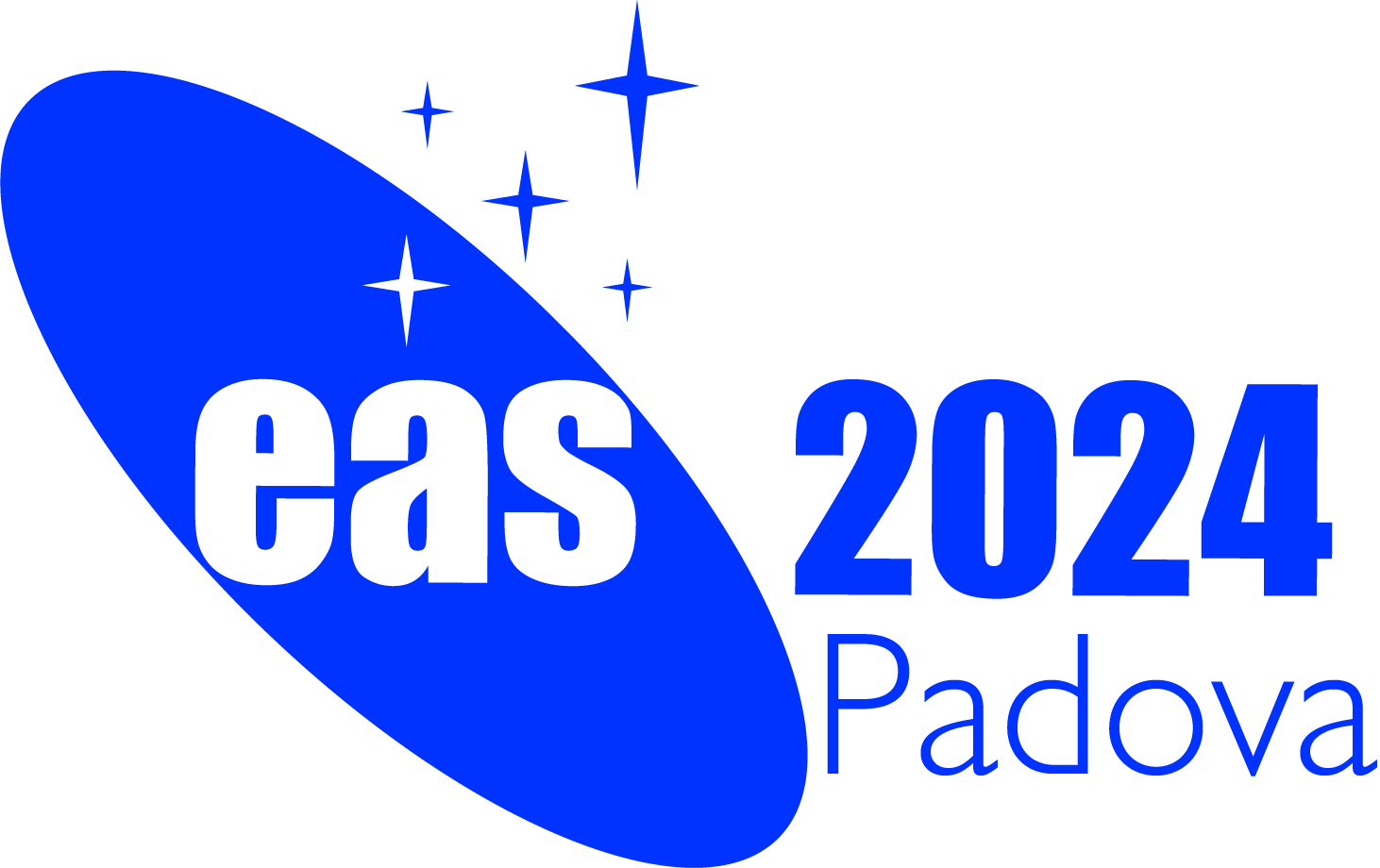Special Session SS16
2 July 2024
Relativistic jets from AGN in the era of high energy polarimetry
Aims and scope
 Relativistic jets from active galactic nuclei (AGN) are among the most powerful and luminous phenomena in our universe. Blazars and radio-loud active galactic nuclei (RLAGN) contain relativistic jets, propelled from the vicinity of a supermassive black hole out to hundreds of kiloparsecs. How they appear to an observer (i.e., their AGN subclass) depends on the inclination of the jet to the line of sight. In particular, in blazars the emission from the jet is relativistically boosted toward us, dominating the spectral energy distribution (SED), which extends into high-energy bands - X-rays and gamma-rays - and displays a high level of linear polarization from radio to optical wavelengths. In this context, multi-wavelength polarimetry has been proposed as a valuable diagnostic tool for investigating particle acceleration processes and the geometrical characteristics of the magnetic field inside the jet. Moreover, X-ray and gamma-ray polarimetry are currently in the limelight as they allow us to explore more extreme particle acceleration and cosmic ray acceleration. However, due to inherent characteristics and instrumental challenges to measure X-ray and gamma-ray photons, high-energy polarization has remained a much more veiled field of polarization compared to other wavelengths. The successful launch of the Imaging X-ray Polarimetry Explorer (IXPE) on December 9, 2021, marked a significant advance in our polarimetry capabilities by extending the technique into the X-ray range. Over a year and a half of operation, IXPE has detected X-ray polarization from blazars and RLAGN, helping to resolve uncertainties in particle acceleration processes and revealing new features of the magnetic field geometry inside the jet.
Relativistic jets from active galactic nuclei (AGN) are among the most powerful and luminous phenomena in our universe. Blazars and radio-loud active galactic nuclei (RLAGN) contain relativistic jets, propelled from the vicinity of a supermassive black hole out to hundreds of kiloparsecs. How they appear to an observer (i.e., their AGN subclass) depends on the inclination of the jet to the line of sight. In particular, in blazars the emission from the jet is relativistically boosted toward us, dominating the spectral energy distribution (SED), which extends into high-energy bands - X-rays and gamma-rays - and displays a high level of linear polarization from radio to optical wavelengths. In this context, multi-wavelength polarimetry has been proposed as a valuable diagnostic tool for investigating particle acceleration processes and the geometrical characteristics of the magnetic field inside the jet. Moreover, X-ray and gamma-ray polarimetry are currently in the limelight as they allow us to explore more extreme particle acceleration and cosmic ray acceleration. However, due to inherent characteristics and instrumental challenges to measure X-ray and gamma-ray photons, high-energy polarization has remained a much more veiled field of polarization compared to other wavelengths. The successful launch of the Imaging X-ray Polarimetry Explorer (IXPE) on December 9, 2021, marked a significant advance in our polarimetry capabilities by extending the technique into the X-ray range. Over a year and a half of operation, IXPE has detected X-ray polarization from blazars and RLAGN, helping to resolve uncertainties in particle acceleration processes and revealing new features of the magnetic field geometry inside the jet.
This journey of discovering the previously hidden features of jets will continue with further polarization measurements, more advanced theoretical models, and more precise measurements in the future. The field of gamma-ray polarimetry is expected to experience growth thanks to future missions such as the Compton Spectrometer and Imager (COSI, planned for launch in 2027), the All-sky Medium Energy Gamma-ray Observatory (AMEGO, planned for launch in 2029), and enhanced ASTROGAM (eASTROGAM, planned for launch in 2029). In the realm of X-ray polarimetry, next-generation missions such as the enhanced X-ray Timing and Polarimetry mission (eXTP, planned for launch in 2027) are already under development. These new projects combined with the development of theoretical models can answer pressing questions on black hole and jet physics, and provide invaluable insights into the high-energy processes in the Universe.
The aim of this session is to discuss high-energy polarimetry in the science of relativistic jets, presenting the latest polarization measurements and advances in theoretical modeling. Additionally, the session will offer a comprehensive view of the future of high-energy polarimetry by examining upcoming facilities that can provide novel data to the field and exploring how this data can best be utilized to advance our understanding of the inner physics of relativistic jets.
(Image credit : NASA/Pablo Garcia)
Programme
- New Polarization Measurements of Relativistic Jets of AGN in the High-Energy Band
- Novel Theories and Modeling of Relativistic Jets of AGN Involving High-Energy Polarimetry
- The Future of High-Energy Polarimetry: Upcoming Developments and Trends
Invited speakers
- Steven R. Ehlert (MSFC, USA)
- Lea Marcotulli (Yale University, USA)
- Nicholas MacDonald (University of Mississippi, USA)
- Michela Negro (Louisiana State University, USA)
- Tiffany Lewis (Michigan Technological University, USA)
- Aretaios Lalakos (Northwestern University, USA)
Scientific organisers
- Dawoon E. Kim (INAF Istituto di Astrofisica e Planetologia Spaziali, Italy)
- Markus Boettcher (North-West University, South Africa)
- Laura Di Gesu (Italian Space Agency, Italy)
- Immacolata Donnarumma (Italian Space Agency, Italy)
- Svetlana Jostard (Boston University, USA)
- Yannis Liodakis (NASA/MSFC, USA)
- Riccardo Middei (Italian Space Agency, Italy)
- Paolo Soffitta (INAF Istituto di Astrofisica e Planetologia Spaziali, Italy)
- Fabrizio Tavecchio (INAF Osservatorio Astronomico di Brera, Italy)
- Francesco Tombesi (University of Rome "Tor Vergata", Italy)
- Haocheng Zhang (University of Maryland Baltimore County/NASA GSFC, USA)
Contact
Updated on Wed Feb 21 15:05:58 CET 2024
|

